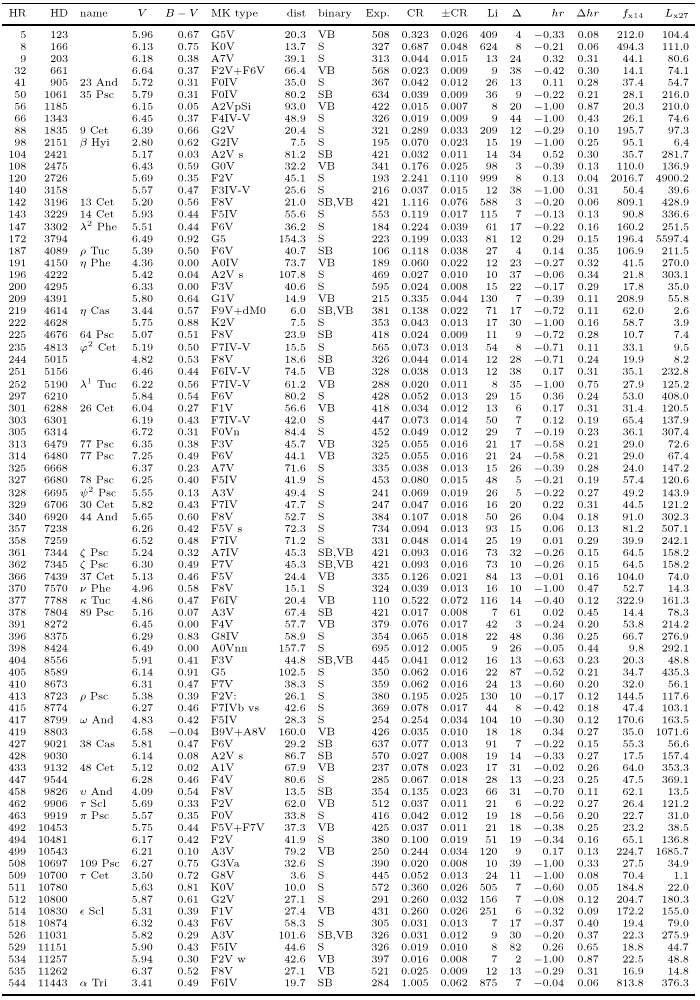
|
Table 2 contains optical and X-ray data of all 980 detected late-type main-sequence stars and subgiant stars as contained in the BSC and specified in Sect. 2.2.
The columns of the table contain the following information:
Col. 1: HR number (BSC). An asterisk indicates objects detected in the survey repair observations (see Sect. 2.2).
Col. 2: HD number.
Col. 3: the star's name (Bayer or Flamsteed designation).
Col. 4: V magnitude (from BSC).
Col. 5: B-V colour index (from BSC).
Col. 6: MK spectral classification (from BSC).
Col. 7: Distance to the star as given by the Hipparcos parallaxes.
Col: 8: binary flag; S: single star, VB: visual binary (if a companion within 90 arcseconds distance is known), SB: spectroscopic binary (as given in the BSC), B: other binary (composite spectrum).
Col. 9: effective exposure time in seconds.
Col. 10: mean PSPC count rate in counts per second.
Col. 11: error of PSPC count rate.
Col. 12: likelihood of existence (cf. Sect. 2.1).
Col. 13: offset in arcseconds between optical and X-ray position.
Col. 14: hardness ratio hr = (H - S)/(H + S) (cf. Sect. 2.4).
Col. 15: error of hardness ratio.
Col. 16: apparent X-ray flux (0.1-2.4 keV) in 10-14 ergcm-2 s-1 (see Sect. 2.4).
Col. 17: X-ray luminosity derived from the distance as given in Col. 7. The values are given in units of 1027 ergs-1.
Acknowledgements
The ROSAT project is supported by the Bundesministerium für Bildung, Forschung und Technologie (BMBF/DARA) and the Max-Planck-Gesellschaft (MPG). We would like to thank our colleagues from the MPE ROSAT group, especially T. Berghöfer, for their support.
Copyright The European Southern Observatory (ESO)